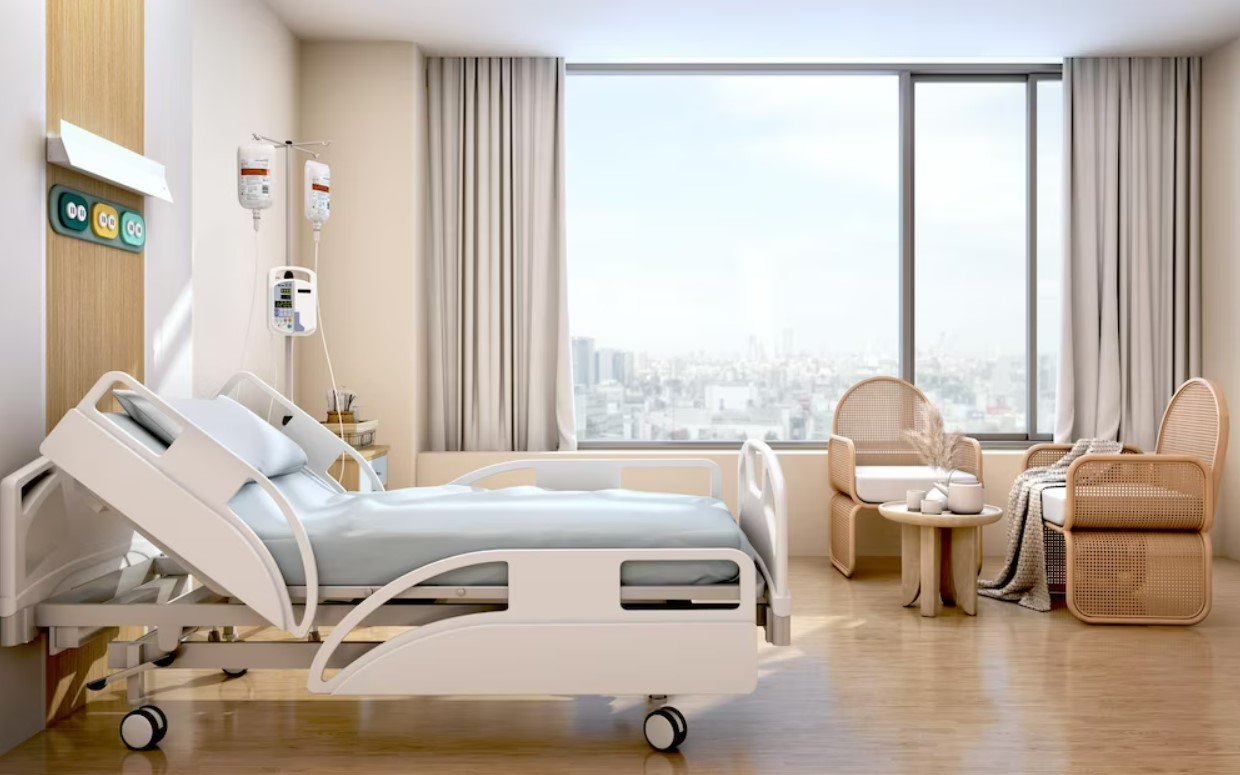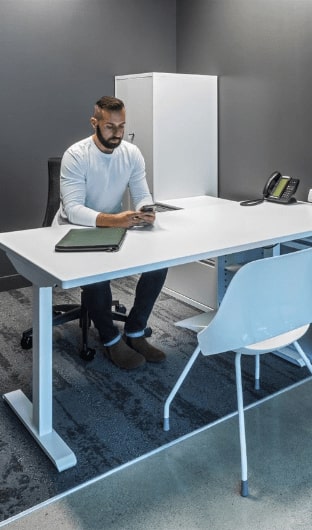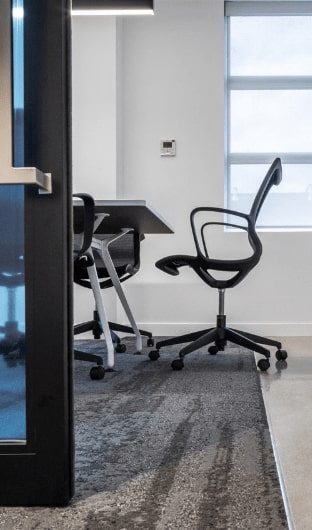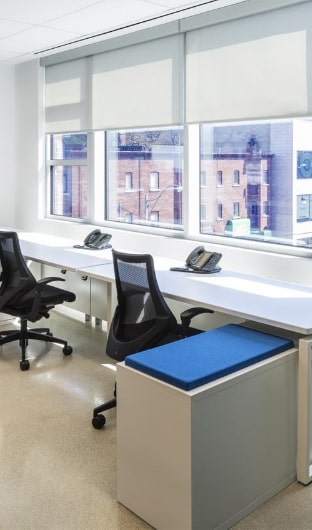
Ensuring Patient Safety & Wellness Through Effective Cleaning In Healthcare Facilities
Hospitals and other healthcare facilities require stringent cleaning and disinfecting procedures to ensure patient safety and wellness. Maintaining a clean environment in healthcare facilities is crucial for the speedy recovery of patients and preventing secondary infections since hospitals and medical facilities provide the perfect ground for the spread of infection and diseases due to the high traffic of sick people within the facility. Frequent cleaning and disinfection of healthcare facilities by professionals are of utmost importance to mitigate the risk of healthcare-associated infections or HAIs. In this article, we will talk about effective cleaning and disinfecting practices along with the importance of using healthcare furniture and equipment that is easy to clean and disinfect.
Difference Between Cleaning And Disinfecting
Cleaning and disinfecting are two different processes that are essential to maintain a clean and healthy environment. Cleaning involves the removal of visible dirt and debris, while disinfecting involves killing germs and bacteria that cannot be seen with the naked eye. Cleaning is important to remove dirt and organic matter that can harbour germs and bacteria, but it does not necessarily kill them. Disinfecting, on the other hand, uses chemicals that are specifically designed to kill germs and reduce the risk of infection. It is important to both clean and disinfect healthcare facilities regularly to maintain a safe and healthy environment, especially in high traffic areas or places where people are more likely to touch surfaces and spread germs.
Best Practices For Cleaning And Disinfecting Healthcare Facilities
People responsible for cleaning and disinfecting patient rooms can use the following tips to ensure effective sanitization:
It is recommended to start cleaning areas that are less dirty and move on to areas that have high traffic and more dirt. This reduces the chance of cross-contamination and spread of germs.
Another common practice is to start cleaning from top to bottom so that at the end of the process, there is no chance of dirt and debris contaminating the lower surfaces.
Surfaces or equipment that are used or touched widely by patients need daily cleaning to prevent the risk of infection.
While cleaning and disinfecting, it is best to follow a pattern – such as moving in a unidirectional pattern within the healthcare facility to ensure no spot is left out.
Step-By-Step Procedure For Cleaning And Disinfecting Patient Rooms
To ensure a safe and healthy environment for patient recovery, cleaning and disinfecting need to be done in a proper and organized way. Putting together the required cleaning tools and resources beforehand and following a planned schedule will ensure thorough and effective cleaning of the healthcare facility.
Below is a guideline for cleaning and disinfecting healthcare facilities effectively through a step-by-step process.
Inspect the hospital area or patient room
Before you start cleaning, it is important to assess the site of cleaning as different areas will require different cleaning resources and procedures. For instance, when cleaning a patient room, inspect the room for visible signs of wear and tear in patient furniture that can hurt or injure the patient. Broken or worn out furniture must be fixed or replaced.
Clean visible dirt and debris
Check the patient room or other healthcare areas for visible dirt and debris on different room surfaces such as windows, walls, mirrors, and so on. Use a microfibre cloth and an appropriate cleaning agent for wiping glass surfaces. If there is a bathroom with a shower provision, make sure you thoroughly wipe and clean the faucet handles, support bars, and other bathroom accessories.
Move on to surfaces that are widely used or touched
Surface areas or objects used regularly by the patient need to be thoroughly cleaned and disinfected to mitigate cross-contamination and the spread of diseases. These can include patient bed frames, side tables, chairs and lounges, switches, door knobs, and handles, among others.
Empty the trash can
When cleaning the trash can make sure you clean both the inside and outside of it. Remember to replace trash liners only after the trash bin is clean and dry to prevent moisture build-up.
Clean the floor
Use a vacuum cleaner to clean the carpet and other high-traffic areas to remove visible debris and dust. After that, mop the floors with a damp cloth and cleaning solution for deep cleaning. Using microfibre cloths can ensure better cleaning and speedy drying of floors.
Visually inspect the area
Finally, finish off the process with a visual inspection of the patient room or other hospital areas to ensure you have not missed a spot. Make sure materials or equipment used by the patient are sent to the sterilization department for thorough cleaning once the patient is discharged.
Common Methods For Effective Cleaning & Disinfecting Of Medical Equipment And Healthcare Furniture
In most hospitals and other healthcare facilities, usually one or a combination of these three approaches are used to clean and disinfect non-porous and hard surfaces:
UV Light – Zero-touch disinfection technology, also known as fogging or misting, utilizes germicidal UV light to kill several pathogens. It works by breaking down DNA bonds in the microorganism, thereby killing them. Dry vapour of hydrogen peroxide in spray form can also be used to effectively disinfect a healthcare room.
Antimicrobial Coating – Recent medical advances use a metal-based antimicrobial coating on high-touch surfaces to minimize the risk of infection following COVID-19. However, the technology is costly and may only be used as surface coatings in healthcare furniture and countertops in healthcare facilities.
Manual Cleaning – The most common and effective method of cleaning healthcare facilities still remains the traditional way of cleaning manually with chemicals and disinfectants. Professional cleaning and disinfection of hospital areas include PPE gear, hospital-grade disinfectants, strong chemical solutions, and related cleaning tools and equipment.
Importance Of Using Sustainable And Easy-to-Clean Hospital Furniture, Materials And Textiles
Hospitals, clinics, long-term care homes, retirement homes, and other healthcare facilities must maintain a strict protocol for ensuring cleanliness and hygiene for patient wellness and recovery. Hospital equipment, furniture, materials, and textiles need to be carefully picked out with the consideration that they need to be cleaned frequently and thoroughly.
Patients who are already ill and have lowered immunity are susceptible to secondary infections and can get seriously ill if hospital surfaces are not cleaned regularly and thoroughly. So, it is crucial to reduce the spread of infection among patients in a hospital environment that is already rampant with germs and bacteria. Selecting the right medical equipment and healthcare furniture can help you better safeguard your patients.
When choosing healthcare furniture, while aesthetics may feel like an important consideration, patient safety, longevity, and ease of cleaning and disinfecting should be top-of-mind considerations. Make sure hospital furnishings, fabrics, and surfaces are of high quality and durable so that they can last years of cleaning and disinfecting while being safe for the patients.
Harkel Office – a leading healthcare furniture dealer in Ontario – has been serving the healthcare sector with modern, personalized, and durable furniture for over 40 years. Reach out to our design experts at 905-417-5335, and find out how we can create a safe and healthy environment for your patients today.





